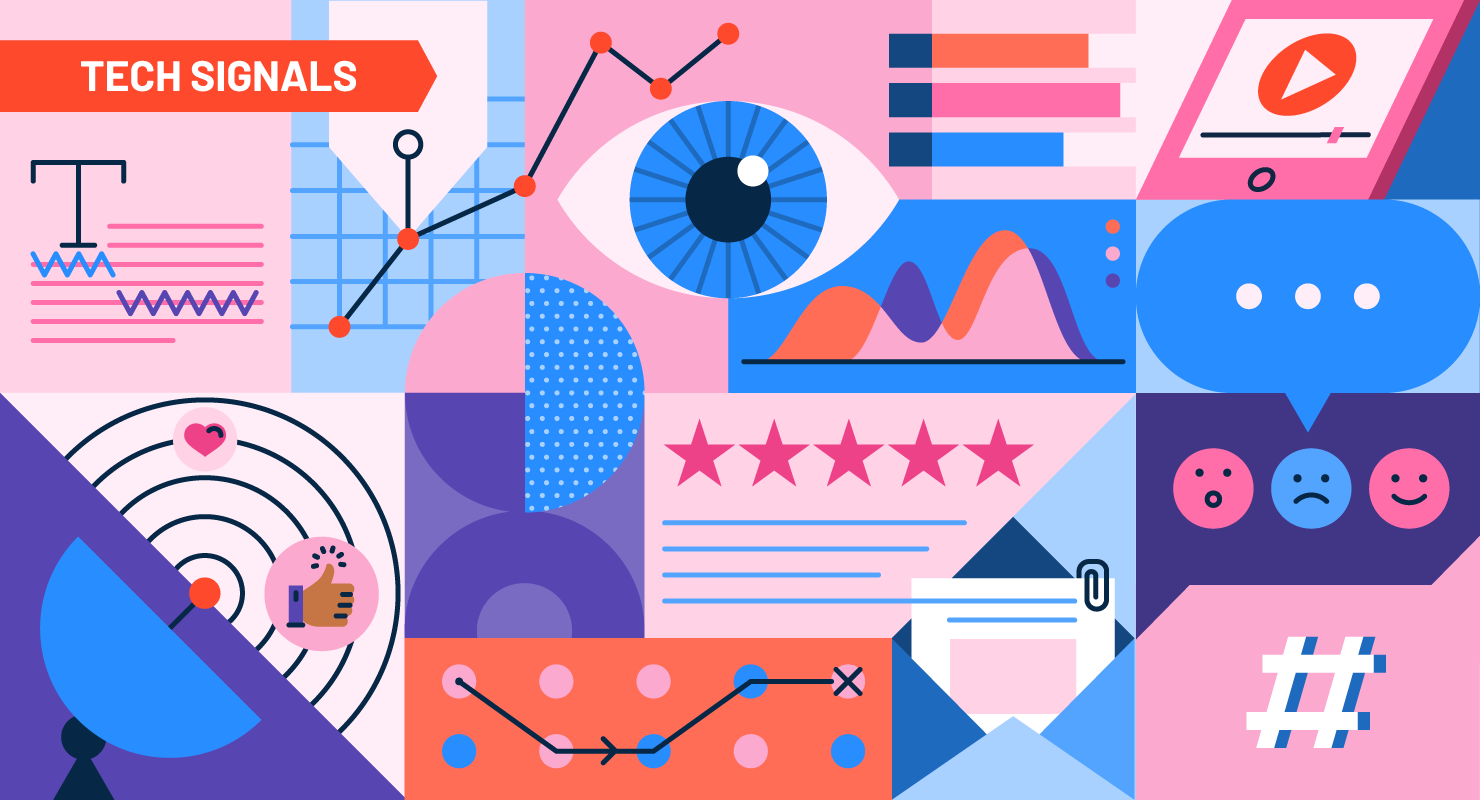December 10, 2024
 by Sidharth Yadav / December 10, 2024
by Sidharth Yadav / December 10, 2024

2024 was the year of tech giants touting the enterprise-readiness of AI software.
Google endorsed its Vertex AI in June, while Microsoft announced SQL Server 2025 in November. Meanwhile, several sellers, including IBM, Wipro, and Cisco, huddled with NVIDIA to join the league.
Enterprises have always been the early adopters of AI and have reaped significant benefits. Data suggests that swift deployment by early adopters among enterprises has spelled the growth in enterprise adoption of AI.
However, while the scope for AI to cover new functions grows, enterprises are relatively less satisfied. In fact, their satisfaction levels trail those of mid-market and small and medium-sized businesses (SMB).
According to user reviews with G2, the ‘likelihood to recommend’, an indicator for satisfaction levels, for AI products among enterprises is below the average score of 91.5 on a 100-point scale.
This suggests that despite being early adopters of AI and vaunted as AI evangelists, enterprises have been difficult to please.
Does this imply AI products have not yet matured to be enterprise-ready? Are legacy structures at enterprises creating roadblocks? What can sellers do to boost satisfaction levels?
To gauge product satisfaction, G2 taps into user reviews to score product categories along multiple parameters.
AI sellers seem to impress the mid-market, which rates AI products higher on every satisfaction parameter except ‘likelihood to recommend’ and ‘ease of admin’. Small businesses rate AI products the highest along ‘likelihood to recommend’, ’ease of set up’, and ‘ease of admin’. Contrasting these segments, enterprises don’t rate AI products the highest on any of the seven parameters.

Source: State of Software report, August, 2024
According to the State of Software report, the most significant gaps between the satisfaction scores of small and mid-market businesses, and enterprises are seen in the areas of:
These signify that the bulk of lower satisfaction levels actually come from the administrators of AI products and not buyers and users, the three roles being typically performed by separate actors in bigger companies.
Despite creating efficient solutions for specific use cases, sellers are hobbling through the structural roadblocks entrenched in large companies. We’ll explore these in later sections.
But what’s troubling the enterprises? According to the reviews, the pain points for enterprise users relate to performance. They point to inaccuracies in output, the inability of tools to process large datasets, and limited functionalities.
According to Yukta Rustagi, market research analyst at G2, software NPS and adoption are correlated. “The more satisfied users are with the software (ease of use, value, and functionality), the higher the chances of sustained adoption,” she explains.
Below are some common pain points for products across top AI categories based on enterprise reviews.
Let’s hear from AI experts and sellers on what they think is holding back the realization of greater satisfaction for AI products among enterprises.
“There is a great deal of scaffolding in enterprises against technology innovations that disrupt the rule of experts and old ways of working,” believes Tim Sanders, VP of research insights at G2.
“AI decouples prediction from judgment where the software (machines) make the prediction and the human passes judgment. Traditionally, experts did both of these.”
Tim Sanders
VP of research insights, G2
Smaller organizations are more receptive to disruptive technologies, including AI. Tim claims they rely more on external expertise and are “scrappy by nature, eagerly adopting innovations even if they are disruptive.”
Enterprises are built on structures and processes that are usually top-down and challenging to change. They also base decisions on a set of lasting core values, vision, and commitments to stakeholders, including investors and customers.
This makes adjustments of cutting-edge technologies like AI within existing structures more of a strategic than an operational call. Buy-ins at multiple levels and security-related compliances can prove roadblocks for sellers.
“Enterprises want to make sure that what they're buying is intuitive, easy to integrate, and easy to use,” says Will Eves, head of enterprise sales for the UK at Synthesia, listed among the top 10 AI software for 2024 by G2.
The new product must demonstrate efficiency in their current workflow. “In other words, they don't want to reinvent the wheel for every new tool they buy,” he adds. This may slow down the onboarding process for AI software and stress seller customer support.
These hurdles from enterprises may mask the lack of infrastructure required for AI within them. An Economist Impact study has found that only 22% of enterprises say their current architecture can support AI workload without modifications. Applying new technologies like AI to unchanging structures may yield sub-optimal results, stoking dissatisfaction among users.
This is supported by Infosys Enterprise AI Readiness report, which found that although enterprises expect AI to boost productivity by 10-40%, only 2% of them are ready for it.
In addition, enterprises are divided into multiple departments. And each department or function is at a different stage of maturity, which may impact adoption, claims Jacob Joseph, VP of data science at CleverTap, a customer engagement platform.
He also highlights data-related hurdles, including scattered data. “Data is the oxygen for AI features to bring out their true value. Scattered data can affect AI’s ability to predict and prescribe accurately,” Jacob explains.
According to Leandro Perez, CMO for Asia-Pacific at Salesforce, data security can concern enterprises while implementing AI solutions. Many enterprises don’t want AI solutions trained on their sensitive company data. Most of them create policies around this, asking employees to use AI software responsibly by not feeding confidential data.
Some AI systems, especially deep learning models, are not transparent about where they store data and the level of access. This can create a feeling of distrust among enterprises.
Further, the bulk of enterprise users for AI products come from IT and services (26.37%) and computer software industries (23.19%), according to G2.

Source: G2 reviews
These industries act as service industries for others, such as healthcare, finance, and education. Any data breaches in them have a spillover effect.
Thus, enterprises in the IT and services and computer software industries require layered security and compliance. As a result, AI product sellers confront greater security-related demands from them.
According to a SAP leader, AI’s tendency to hallucinate can be another concern for enterprises. “Here, application suite vendors have the upper hand. The business applications that power the world’s enterprises have a wealth of business data that can be mined by AI algorithms to produce accurate, relevant, and reliable insights. Vendors in this space also have significant expertise in business processes and contextualized data — the perfect sources for training effective GenAI,” he writes in an article.
According to Tim, enterprises have greater leverage with vendors compared to mid-market companies and SMBs. They expect new services to integrate seamlessly into their processes and are less forgiving of any growing pains.
“As a cutting-edge technology, AI suffers from early quality issues and integration hiccups for enterprises. They are also more risk averse than mid-market and SMB users,” he says.
Sellers may focus on the areas below to improve satisfaction among enterprises:
Tim says many of the successful AI vendors take a “crawl, walk, and run” approach to their go-to-market efforts.
This means that they first target SMBs to learn from and then conduct research with enterprise buyers to better understand what they need to do to align with their internal processes and drive change management if necessary.
Grammarly, which leads the AI Writing Assistant category, has adopted this approach. It first focused on SMBs to hone its B2B offerings. Its current customer portfolio still sits at 86% for SMBs. However, in recent months, the writing assistant has doubled down on larger companies, with the stated intent to improve workplace communication by permeating all channels. Its offerings now go beyond mere grammar and spell checks.
“We found that users were taking us into corporate environments for use at work,” says Grammarly CMO Lena Waters. “As a consumer product, we didn't have enough security and controls for companies. So we quickly developed those.”
Even within a given company, sellers must start with smaller use cases to establish quick wins and trust and then expand horizontally and vertically to cover other functions, says Jacob.

Marketing news brewed fresh every week just for you. Subscribe here
It is essential for enterprise buyers to have AI solutions that smoothly integrate with their existing systems. In fact, Integration capability is the top evaluating factor for companies looking to buy new marketing technology. According to a G2 survey, the marketing function across companies leads the other teams in AI adoption.
Jacob advises that AI products must be plug-and-play for enterprises.
“Sellers must make products that integrate seamlessly into the existing complex environment of enterprises.”
Jacob Joseph
VP of data science, CleverTap
He adds that sellers need to advocate for appropriate consulting and change management approaches to successfully make integrations work.
A Wipro-partnered white paper in Harvard Business Review suggests that businesses can benefit from knowledge partners. These partners could help implement and customize tools to suit an enterprise’s business needs, test models for potential biases, and conduct data privacy audits.
Whereas Leandro suggests that sellers must educate customers that they don’t need do-it-yourself AI solutions. He claims that solutions like Salesforce partner with other platforms offering low-code customization tools and real-time data integration.
Smooth integrations help companies realize an ROI on software faster. Along with incompatible software, misalignment among software buyers, administrators, and users can stall quick integrations.
Integrations are essential when 78% of software buyers desire to realize an ROI within six months of a software purchase, with 57% having this expectation for just three months, according to G2’s Buyer Behavior Report, 2024.
“Enterprises have tons of data and valuable information, so AI product sellers should focus on security, compliance, and privacy of data — while being open and transparent about it,” says Yukta.
AI products process a greater variety of data than other software. They use data for training, testing, and validation and tap into personal and company data for this.
While enterprises commonly demand data anonymization and localization of sources, sellers must also adhere to cybersecurity standards such as HIPAA in the US and GDPR in Europe.
Lack of transparency regarding the collection, storage, and processing of data by AI product sellers is a major concern for enterprises. Further, enforcing accountability for data breaches and misuse can be daunting without AI-specific regulations across many jurisdictions.
AI product sellers must dedicate special teams to supporting onboarding and implementation.
A major implementation component is demonstrating AI functionality to specific use cases both horizontally and vertically. Will says customers may discover new use cases in the process, too.
“Enterprise adoption is only successful when people, processes, and technology are aligned.”
Will Eves
head of enterprise sales, UK, Synthesia
He adds that this requires a strong understanding of what value means to the customer, alignment of the people on both sides who can influence it, and the technology to it. “It’s also important to train teams on the technology to ensure this value is realized,” he says.
Further, he laments that although professional services are a significant proposition of a successful enterprise transformation investment, many AI vendors often overlook them.
Today, AI is the fastest-growing software market, adding 38% new products in a year, according to the G2 State of Software report. The growth rate is more than twice that of the next fastest-growing market, design.
With the SMB market crowding with AI products, software leaders are foraying into the enterprise segment.
Sam Altman, chairman of OpenAI, once said, “AI will probably most likely lead to the end of the world, but in the meantime, there'll be great companies.” To build these AI-powered companies, sellers must realize the rules of engagement are different for enterprises.
To win over them, sellers must deliver what they promise. The trial-and-error method of fine-tuning software, more suitable for SMBs, may not pass muster with enterprises. They demand plug-and-play solutions that are more secure.
Plus, enterprises also look for scalable solutions. Software must be able to process volumes of data and be applicable to multiple use cases.
Enterprises are risk-averse but not technology-averse, including for AI. After all, enterprises have spearheaded technologies like cloud computing, machine learning, and cybersecurity in the past.
Featuring inputs from Yukta Rustagi, market research analyst, G2
Edited by Supanna Das
Sidharth Yadav is a senior editorial content specialist at G2, where he covers marketing technology and interviews industry leaders. Drawing from his experience as a journalist reporting on conflicts and the environment, he attempts to simplify complex topics and tell compelling stories. Outside work, he enjoys reading literature, particularly Russian fiction, and is passionate about fitness and long-distance running. He also likes to doodle and write about employee experience.
Sell smart, win more. This is the approach high-performing B2B sales professionals embrace to...
 by Julie Jung
by Julie Jung
Pop quiz: what do today’s marketing teams and the Oakland Athletics from “Moneyball” have in...
 by Sidharth Yadav
by Sidharth Yadav
Algorithms are like a recipe for a cake. The core ingredients may stay the same, but a great...
 by Sara Rossio
by Sara Rossio
Sell smart, win more. This is the approach high-performing B2B sales professionals embrace to...
 by Julie Jung
by Julie Jung
Pop quiz: what do today’s marketing teams and the Oakland Athletics from “Moneyball” have in...
 by Sidharth Yadav
by Sidharth Yadav


